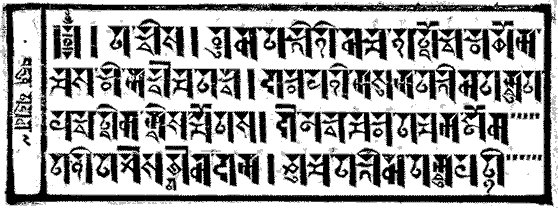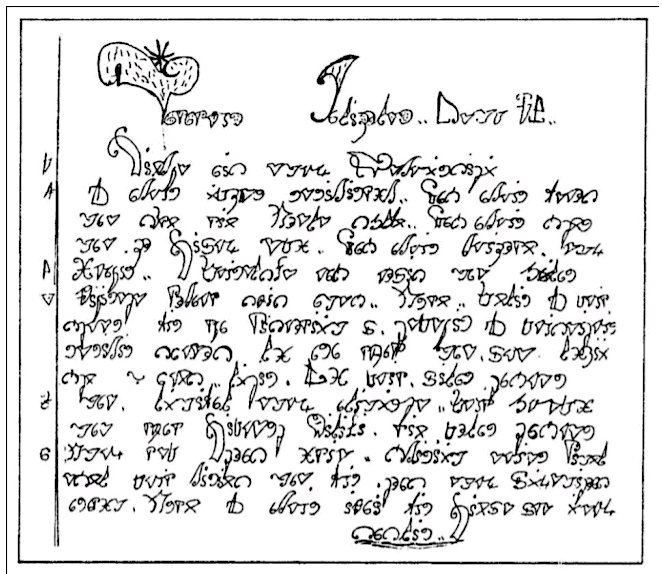If something is important, we write it down. That’s how it’s been for millennia. However, as important as writing is, 85% of the world’s alphabets are on the brink of extinction, tossed aside for the more common and popular alphabets. But one man wants to change that.

If you’re reading this, the odds are you’re familiar with the Latin alphabet — or at least use a translator that can work with this alphabet. This is probably the most common type of alphabet, being used by some 3 billion people on the planet. But there are dozens of alphabets used around the world. Some are more popular, like the Chinese kanji or the Japanese Hiragana; others, like the Georgian, are geographically isolated, but still have a strong national presence. But others are at risk of fading.
In 2009, Tim Brookes founded a non-profit called Endangered Alphabets, making an active effort to preserve these writing systems at risk of disappearing.
“When a culture is forced to abandon its traditional script, everything it has written for hundreds of years — sacred texts, poems, personal correspondence, legal documents, the collective experience, wisdom and identity of a people — is lost. This Atlas is about those writing systems, and the people who are trying to save them,” the project webpage reads.
It may seem weird, but alphabets are disappearing at an unprecedented rate. Due to globalization, colonization, and the stigma sometimes associated with writing in a minority alphabet, many writing systems are at risk of being forgotten. For instance, when colonists arrived in the Philippines, they failed (or didn’t care) to recognize the local linguistic diversity. Tagalog was pushed as the primary language, while Kulitan, a script used to write Kapampangan, a local language, was pushed to the wayside. Nowadays, Kulitan is only commonly used in seals, logos, and heraldry — though there is a movement to revive its use.

This pattern is surprisingly common. In Africa, for instance, dozens of alphabets are at risk. The Tifinagh alphabet in Morocco, for instance, is attested to have been in use from the 3rd century BC to the 3rd century AD. After a period of gradual abandonment, Tifinagh was revived in the 1980s with the invention of the “neo-Tifinagh” — a modern fully alphabetic script developed from earlier forms of Tifinagh. The Nubian script is another ancient example, being one of the oldest scripts in human history, used for at least 7,000 years.
But not all the endangered alphabets are ancient; some are surprisingly new. The Bamum script, for instance, was developed in 1896 when the 25-year-old King Ibrahim Njoya of the Bamum Kingdom in Cameroon had a dream. Although it was first envisioned by a single person practically overnight, the alphabet is surprisingly practical. The king invited subjects to send him simple signs and symbols and used these as letters. After the next few years, the alphabet became more and more rationalized until 1910, when it became fully functional. Using the script, the king wrote a history of his people, a book of medicines, as well as a guide to good sex. He built schools and libraries that used the script and supported artists and intellectuals that used it. The initial German colonists had little problem with this, but when the French came into power after Germany’s defeat in WWI, they ousted the king and sent him into exile. They also destroyed his printing press shops and burned his libraries and books, outlawing the script. It was only in 2007 that the first efforts began to revive the script, which is now taught to students as part of their Bamum heritage.
It’s this type of resurgence that Brookes hopes to bring.
“In 2009, when I started work on the first series of carvings that became the Endangered Alphabets Project, times were dark for indigenous and minority cultures,” he writes. “The lightning spread of television and the Internet were driving a kind of cultural imperialism into every corner of the world. Everyone had a screen or wanted a screen, and the English language and the Latin alphabet (or one of the half-dozen other major writing systems) were on every screen and every keyboard. Every other culture was left with a bleak choice: learn the mainstream script or type a series of meaningless tofu squares.

Not all the scripts included are technically alphabets. Some are abjads (a writing system in which symbols or glyphs are only used for consonants, leaving it to readers to infer an appropriate vowel) or abugidas (systems in which consonant-vowel sequences are written as units), but all of them lack “official status in their country, state, or province”. The goal of the Atlas is to prevent them from being “dominated, bullied, ignored, or actively persecuted by another, more powerful culture” — before ultimately going extinct.
The people at the Atlas also carry out research and assess the status of these scripts and works on ways to promote and revitalize them. To find out more about how you can support their work, check out their webpage. To read more about the work that they do, check out their blog.






